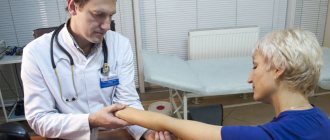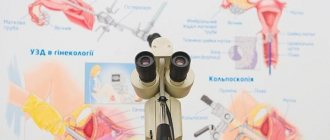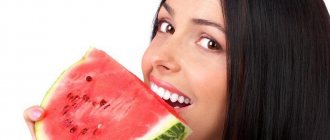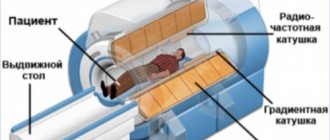Oxalates in 24-hour urine
Oxalates are present in small quantities in the urine of a healthy person. If their number exceeds the norm, this may indicate serious problems in the functioning of the renal system. Oxalates are especially often found in the urine when consuming foods that contain large amounts of oxalic acid salts. The largest amount of oxalic acid is found in sorrel, grapes, apples, tomatoes, and spinach. Therefore, excess oxalates may occur when eating fruits and vegetables. An increased content of calcium salt crystals in the urine contributes to the development of urolithiasis and the formation of stones in the kidneys and bladder. Such stones are often found in vegetarianism. Usually this disease takes on a hereditary form or has a congenital abnormality, which consists of improper metabolism of oxalic acid. Precipitation of oxalates in the urine can be observed in inflammatory bowel diseases, after intestinal surgery, ulcerative colitis, Crohn's disease, and diabetes mellitus. The reasons for the appearance of oxalates in the urine can be caused by an insufficient amount of vitamin B6 or from an excess of vitamin C in the body. A disease in which calcium oxalate salts are deposited in the tissues of the human body, causing inflammatory and sclerotic changes in them, is called hyperoxaluria. Hyperoxaluria can be primary (congenital) and secondary (due to diseases accompanied by impaired salt metabolism). Primary hyperoxaluria is a rare inborn error of metabolism characterized by excessive formation and excretion of oxalic acid salts. It is important to note that the level of oxalic acid salts in the urine increases long before its increase in the blood serum. Therefore, determining the content of oxalates in urine is an important step in the diagnosis of primary hyperoxaluria (including in children). Indications:
- diagnosis of primary hyperoxaluria in infants
- examination of patients with renal failure and exclusion of the development of oxaluria in them
- for pathology of the gastrointestinal tract, diabetes mellitus
- Diagnosis of the cause of urolithiasis
- to assess the course of the disease, monitor the development of complications and the effectiveness of treatment
- osteoporosis and other bone tissue pathologies
- dysfunction of the parathyroid glands
- vegetarian diet
Reception of biomaterial: Sunday-Thursday until 11.00.
Dysmetabolic nephropathy (oxaluria) in children: a modern approach to treatment
Dysmetabolic nephropathies (DN) are a large group of kidney diseases with different etiologies and pathogenesis, which are based on metabolic disorders.
In a narrower sense, some authors understand the term DN as a polygenically inherited (multifactorially developing) nephropathy, which is associated with the pathology of oxalic acid metabolism and manifests itself in conditions of familial instability of cytomembranes [1]. As a result of a disturbance in the metabolism of oxalic acid, the so-called oxaluria and/or calcium oxalate crystalluria develops. In foreign literature, the term DN does not exist; the pathology in question is diagnosed as oxaluria or hyperoxaluria.
Oxaluria is usually divided into primary and secondary. Primary DN (oxaluria) are hereditary diseases that are characterized by a progressive course, early development of urolithiasis and chronic renal failure. This group of diseases is caused by the absence of glyoxylic acid metabolic enzymes, which leads to a significant increase in the synthesis of oxalates in the body. Secondary DN (oxaluria) are polygenically inherited or multifactorial diseases, the implementation of which requires external adverse influences.
The leading pathogenetic link in the occurrence of these nephropathies is the structural and functional destabilization of cell membranes, activation of lipid peroxidation (LPO), and inhibition of the body's antioxidant defense. That is, this nephropathy is a variant of renal membranopathy and manifests itself in conditions of instability of cell membranes [2].
Among the pathogenetic pathways for the development of oxaluria and/or calcium oxalate crystalluria, the following are also distinguished:
- increased intake of certain substances into the body;
- pathology of various organ systems (mainly the digestive tract), leading to disruption of the metabolism of oxalic acid;
- unfavorable environmental factors, drug therapy.
In some cases, DN (oxaluria) is divided into several groups depending on the conditions against which these diseases occur [3]:
- The first group includes DN with calcium oxalate crystalluria (DOCC), which are characterized as polygenically inherited nephropathies associated with oxalic acid pathology and manifesting themselves in conditions of instability of renal cytomembranes.
- The second group is oxaluria or DNOKK in children with diseases of the urinary system (pyelonephritis, glomerulonephritis, etc.), caused by a secondary membranopathological process in the kidneys caused by the underlying kidney disease.
- The third group is nephropathy, which develops under the influence of unfavorable environmental factors.
This approach to understanding the problem can serve as one of the prerequisites for developing an algorithm for the treatment of DN (oxaluria).
A number of foreign researchers believe that one of the main places in the development of DN (oxaluria) belongs to the pathology of the digestive tract. Thus, dysbiotic intestinal disorders (in particular, deficiency of lactobacilli) can lead to impaired degradation of oxalates in the digestive tract, which is accompanied by increased absorption of oxalates in the intestines and the development of oxaluria. This mechanism in the pathogenesis of hyperoxaluria is reflected in a new approach to the treatment of these conditions - the use of probiotics [4]. It is of interest to study the role of the anaerobic microorganism Oxalobacter formigenes. This microorganism produces the enzyme oxalyl-CoA decarboxylase, which leads to the degradation of oxalates, which affects the regulation of oxalate homeostasis, preventing its absorption in the intestine. Results of studies performed by Troxel SA et al. in 2003 in the USA, indicate a connection between the presence of O. formigenes in the intestine and the development of hyperoxaluria. Adults and children over 16 years of age were observed in this study. The main group consisted of patients suffering from urolithiasis with hyperoxaluria, the control group included people without urolithiasis. The study showed that O. formigenes was not detected in 60% of those examined in the main group and only in 26% of the control group [5].
Children with oxaluria, as a rule, do not have specific clinical symptoms of the disease. Quite common may be complaints of abdominal pain, dysuric phenomena (up to attacks of renal colic), and in more severe cases - signs of damage to the musculoskeletal system. DN (oxaluria) can be combined with allergic diseases of the skin and respiratory tract. In the anamnesis of children suffering from oxaluria and/or DNOCC, various diseases associated with metabolic disorders (urolithiasis, cholelithiasis, diabetes mellitus, etc.) are quite common.
The main diagnostic method for these conditions is laboratory diagnostics. Laboratory changes characteristic of DN (oxaluria) are:
- increased oxalate content in biochemical urine analysis;
- the presence of oxalate crystalluria in single urine tests;
- microerythrocyturia from 2 to 20–30 in the field of view;
- microproteinuria from trace to 0.066%;
- absence of pronounced tubular dysfunctions;
- markers of cytomembrane instability (urinary excretion of ethanolamine, lipids, peroxides, increased activity of phospholipids, etc.) and a decrease in the anti-crystal-forming ability of urine [6].
To diagnose DN (oxaluria), a combination of clinical symptoms and the above laboratory changes can be used. In this regard, it should be noted that the term DN (oxaluria) and “crystalluria” are not synonymous. Crystalluria is a variant of urinary syndrome and is most often transient in nature. Often it disappears after an illness (ARVI, ARI).
Treatment
The basic principles of treatment of DN (oxaluria and/or DNOC) are:
- diet therapy - aimed at limiting the intake from food and the formation of “salts” in the body;
- maintaining the stability of cytomembranes and suppressing the processes of lipid peroxidation (LPO) - membrane stabilizing and antioxidant agents;
- increased fluid intake to reduce the concentration of crystalloids in the urine.
The recommended diet is aimed at reducing the functional load on the kidneys. During an exacerbation of oxalate nephropathy, a potato-cabbage diet is recommended. This diet should be recommended for 2-3 weeks. In the future, when the process stabilizes, the therapeutic diet can be expanded. However, it excludes foods containing large amounts of oxalates (
).
The diet also limits the consumption of foods that are sources of ascorbic acid (black currants, Antonov apples, radishes, rose hips, etc.).
Until now, foods that are a source of calcium are excluded or limited from the diet of children suffering from DN (oxaluria and/or DNOC). At the same time, there are studies whose results have not revealed a positive effect of limiting foods that are sources of calcium on the course of oxaluria/hyperoxaluria [8, 9]. It should be noted that these studies were performed in adults, whose calcium requirements are more stable.
Borghi L. and his colleagues in 2002 observed two groups of patients suffering from urolithiasis. The first group received a low-calcium diet, while the patients in the second group used a low-protein, low-salt diet with normal calcium levels. The study showed that the recurrence rate of urolithiasis was much higher in patients in the group receiving a low-calcium diet, especially towards the end of the observation period [8].
Similar results were obtained by Nouvenne A., Meschi T., Guerra A. et al. In this study, of two groups of patients examined with idiopathic oxalate urolithiasis, the level of oxaluria significantly decreased in the group of patients receiving a low-protein, low-salt diet with normal calcium levels. In the group of patients receiving a diet with reduced calcium levels, no reliable results were obtained regarding a decrease in the level of oxaluria (

) [9].
Thus, at the present stage, the issue of limiting foods that are sources of calcium in the diet of children suffering from oxaluria is not assessed unambiguously. Taking into account the results of the above studies, it can be assumed that calcium intake should correspond to the physiological norm of the child’s need for this mineral.
In recent years, studies have appeared on the effectiveness of using probiotics in patients suffering from oxaluria. There are indications in the literature about the effectiveness of using lactic acid bacteria in the treatment of people suffering from oxaluria. In particular, a number of foreign studies have shown that the use of lactic acid bacteria (Lactobacillus casei and Bifidobacterium breve) in complex treatment with diet therapy helps reduce the level of oxaluria, which, according to the authors, is the basis for recommending the use of probiotics in conjunction with diet [4].
An important part of the treatment of oxaluria is the administration of membrane stabilizers and antioxidants. For this purpose, vitamins A and E, a complex of vitamins B1 and B6 are used in the treatment of DN (oxaluria). Vitamin A (1000 IU per year of life per day) is used in combination with vitamin E (1–1.5 mg/kg/day, but not more than 15 mg/day) in courses of 3 weeks quarterly. Vitamin B6 is used at a dose of 1–3 mg/kg/day in the first half of the day, taking into account the biorhythm of its absorption for 1 month. The combined use of vitamin B6 and vitamin B2 is highly effective. The dose of vitamin B2 is 2.5–5 mg/day [10].
Traditionally, the drug Xidifon (2% solution) is still used, which regulates calcium metabolism at the cellular level, prevents its deposition in soft tissues, and also inhibits excessive activity of phospholipases. It is used in a dose of 10–20 mg/kg body weight in 2 doses per day. Duration of treatment ranges from three weeks to 6 months. This drug should be prescribed in combination with vitamins A and E.
The domestic drug Dimephosphone (15% solution), which is prescribed at the rate of 1 ml for every 5 kg of weight (or 30 mg/kg) in three doses, has a membrane-stabilizing effect. This drug has shown its effectiveness in patients with atopy. Thus, the use of this drug seems appropriate in children with oxaluria combined with atopic dermatitis and bronchial asthma.
For DN (oxaluria), it is advisable to prescribe medications containing magnesium. Magnesium preparations can be used: Magne B6, Magnerot, Natural Kalm.
In recent years, the effectiveness of the use of enterosorbents has been proven, especially in environmentally unfavorable regions [3] and, in particular, the enterosorbent Enterosgel [11].
In addition to diet therapy, the use of membrane stabilizers and antioxidants in the treatment of oxaluria, an adequate drinking regime is of sufficient importance. In these conditions, it is recommended to increase fluid intake by 50% of the required amount for a given age, provided that the function of the cardiovascular system and kidneys is satisfactory. Additional fluid intake is recommended in the evening and before bedtime. Preference is given to mineral waters, which are prescribed at the rate of 3 ml per kg of body weight, taken 3 times a day (15–20 minutes before meals). Duration of use is 2–3 weeks. Among mineral waters, “Slavyanovskaya”, “Smirnovskaya”, “Bzhni”, “Naftusya” can be used.
Thus, timely and adequate treatment of DN (oxaluria) is an important factor in the prevention of diseases such as urolithiasis. At the same time, at the present stage, a number of methodological approaches in the treatment of these conditions are the subject of discussion and require further research.
For questions regarding literature, please contact the editor.
E. A. Gordeeva , Candidate of Medical Sciences
RMAPO , Moscow
Table 1.
Table 2.
Notes from a laboratory assistant. Causes of oxalate formation
Authors : Kuznyak Irina
Excess salts in OAM most often appear in “thick”, concentrated urine. If a person drinks a sufficient amount of fluid, then, most likely, he is not at risk of urolithiasis. Oxalates (oxalic acid salts) can be formed in urine with an acidic pH, and with an alkaline environment, and with a neutral one. This is probably the insidiousness of oxalate stones, and the reason that of all kidney stones, oxalate stones occur in the majority of cases. And if for the formation of other stones (microlites) a clear connection to alkaline or acidic urine is needed, which means that, knowing this, you can influence the environment, pH, then, alas, this trick will not work with oxalates.
The only thing that can be advised is to limit the consumption of foods rich in oxalic acid. Oxalic acid interferes with the absorption of calcium, forming insoluble salts. There is also an opinion that excess vitamin C can lead to the formation of oxalate stones, but this is now being questioned, since the reactions that take place in vitro during research are not necessarily repeated in the human body. But personally, I observe 99% of cases of the appearance of oxalates in microscopy precisely after uncontrolled and prolonged use of vitamin preparations. Of these, 90% of cases are after massive intake of vitamin C and 10% after taking vitamin D in the form of an aqueous solution. Firstly, vitamin D contains citric acid, which easily combines with calcium, and secondly, water drops of this vitamin are more difficult for mothers to dose than oil drops. If oxalates suddenly appear in the TAM, then you need to either reduce the dose of the vitamin or discontinue the drug. To be honest, it’s scary to see all the microscopy fields of view in salt crystals, reading the child’s age on the form: 1 month, 2 months, 7 months.
Oxalates have the ability to form insoluble salts with Ca, Mg, Fe ions. Calcium (and magnesium, by the way, too) is a macroelement in the body; oxalic acid salts most often combine with it.
Since iron is a trace element in the human body, the formation of salts with it (and then theoretically) is only possible in the form of sand, which will not be retained in the kidneys. Another thing is the combination of oxalates with calcium. Calcium in the body is a macroelement (concentration in the body is 0.04–2%), that is, with excess intake of oxalic acid from food and a tendency (possibly even hereditary) to disrupt oxalate metabolism, insoluble compounds of CALCIUM OXALATE (CaC2O4) may appear.
Products containing large quantities of oxalic acid, from which oxalates are formed, can easily be found in the literature. I would recommend reading this article about a diet with a tendency to form oxalates.
published 29/11/2018 17:15 updated 30/11/2018 — Nutrition, vitamins, Tests and examinations, Kidney and urinary tract diseases, Tests and examinations, Nephrology and urology
Article "Diet for oxaluria in children."
Nephrologist at Children's Clinic No. 6 Olga Gennadievna Bolgarova.
Hyperoxaluria is an important lithogenic factor. Up to 90% of oxalate is of endogenous origin, 10% comes from food in its pure form, but this ratio can vary significantly. There are primary and secondary, which are less pronounced.
The reasons are the consumption of large amounts of oxalic acid (nutritive form) and increased absorption of oxalate in the gastrointestinal tract (enteral form). The latter is observed when calcium is limited and fat absorption is impaired. Free fats bind calcium, which is a significant limiter of oxalate absorption by forming insoluble complexes with it. The cause of hyperoxaluia may also be the absence in the intestines of microorganisms that break down oxalic acid ( Oxalobacter formigenes,
Lastobacillus casei and Bifidobacterium breve).
For the enteral form, a low-oxalate, low-fat diet, calcium supplements, and plenty of fluids are recommended. Also, this disease can be inherited, occurring in people who abuse food containing oxalic acids, lead a passive lifestyle, or have an unstable, poorly balanced diet. Unfortunately, oxaluria often occurs in children. The presence of stones in the urinary system is very dangerous. Since they cause significant damage to the tissues of the kidneys, bladder and ureters. In rare and severe cases, the patient may even lose a kidney. The diet for oxaluria in children and adults has the same structure. The only difference is that the child must be constantly monitored and his diet must be worked on.
Diet for oxaluria plays a vital role for children. Together with medications, surgical interventions and therapy, diet is an important process in the treatment of the disease. Proper nutrition can significantly improve a child's health and significantly prevent the formation of new stones. Also, with the help of a well-chosen diet, you can restore balance in the body.
So, if a disease such as oxaluria is discovered in a child, the diet strictly prohibits the use of:
- all foods high in oxalic acids (spinach, figs, cocoa, chocolate, sorrel, rhubarb, purslane);
- dishes containing fat, as well as all smoked, pickled, hot, salted and spicy foods;
- highly rich and fatty broths (soups) from poultry, fish and meat;
— gelatin-containing products (aspic, jelly, jelly, marmalade).
Also, the oxaluria diet involves limiting the amount of the following foods:
- from vegetables: tomatoes, carrots, onions, beets (in any form), green beans, beans,
- beef, chicken, aspic, liver, cod, meat is limited and intake is recommended in the first half of the day (excess animal protein oxidizes urine and promotes crystallization),
- butter,
- from cereals: corn,
- from berries: black currants, blueberries, strawberries, gooseberries.
Taking additional vitamins C and D should be discontinued.
The oxaluria diet is formed from the most suitable products that can support the body and improve its health. The list of products recommended by doctors includes:
The first and main purpose is to increase fluid intake, mainly through clean, soft water. With hyperoxaluria it is 2 liters (in adult children), with ICD up to 2.5 or more.
- all fruits that help remove oxalates from the body (pear, quince, dogwood, apple, plum, grapes, bananas, apricots);
- all foods high in vitamin B6 (buckwheat, barley, pearl barley, millet, wheat bread, liver);
- all products with a high content of magnesium (wheat bran, apricots, seaweed, millet, prunes, oatmeal);
- products rich in pectin and fiber, cucumbers, peas, cabbage, melons;
— calcium in the diet should not be limited (dairy products are better in the first half of the day).
In addition, the diet for oxaluria involves reducing the consumption of carbohydrates and table salt. It is advisable to fill your child’s daily menu with plenty of vitamins of natural origin. The number of daily calories for an active child is three and a half thousand units.
A very unpleasant and uncomfortable disease is oxaluria in children; diet can cure it. Of course in the early stages. But even in difficult cases, it plays a very important role. It is necessary to constantly monitor the child’s nutrition. It is advisable to draw up a menu for the week in advance in order to properly distribute and balance all the necessary substances, vitamins and various microelements.
Balneological treatment is also recommended as a general strengthening measure (resorts Mineralnye Vody, Zheleznovodsk, Pyatigorsk, Kislovodsk).
Who is susceptible to pathology?
The content of the article
Oxaluria most often occurs in people who have had to deal with disorders of mineral metabolism. The risk is also increased in patients whose intestinal function is defective, and calcium is absorbed into the blood much faster than it should normally occur. It is important to understand that calcium oxalate does not always precipitate, no matter how much of it enters the body with food. Most often, this situation occurs with magnesium deficiency. At the same time, special tests for the level of vitamins in human blood indicate a pronounced deficiency of vitamins A and B6.








